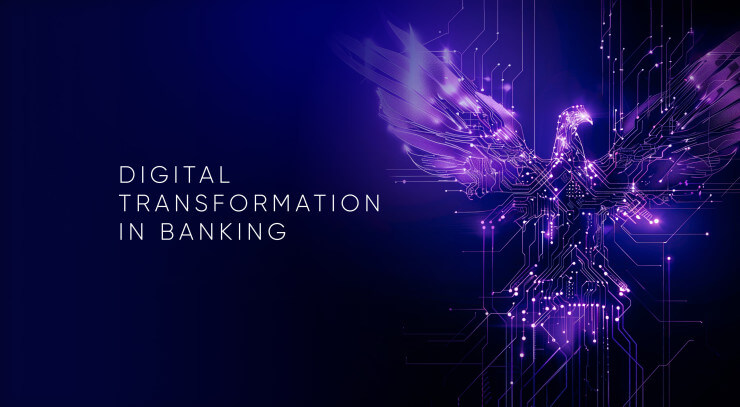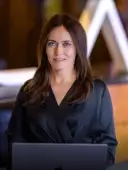In the digital age, a bank’s app is its storefront, its face to the world that becomes the main, or even the only, interaction point with the brand. Yet, too often, financial executives overlook the user experience (UX) of their apps, leading to customer frustration and churn. What if your bank’s app is a UX disaster waiting to happen? Here’s how to find out—and fix it before it’s too late.
In the fiercely competitive world of finance, where every customer interaction counts, user experience has emerged as a critical battlefield. It’s no longer just about offering a digital service; it’s about how that service feels, functions and fits into the lives of the customers who use it.
UX in banking and financial apps is not just a nice-to-have feature—it's the difference between retaining a customer and losing them to a more savvy competitor. And the competitor may be not only another financial company, but also a popular non-financial brand. According to a Marqeta survey of over 4,000 consumers in 2024, 63% of U.S. consumers aged 18-34 are ready to consume financial services from non-traditional providers, such as tech companies, social media platforms or retailers, due to a trustworthy brand, convenience and ease of use.
The High Stakes of UX in Banking Apps
Imagine this: a customer opens their banking app to transfer money urgently. The interface is cluttered, the navigation confusing and the loading time excruciating. Frustration sets in, leading to a negative perception of the bank itself. This isn't just a hypothetical situation; it's a daily reality for millions. Poor UX isn’t just an inconvenience—it's a risk to customer loyalty, brand reputation and, ultimately, the bank's bottom line.
We have to admit, banks are no longer just financial institutions; they are digital platforms in which the user experience directly impacts customer satisfaction and loyalty. A study by PwC highlights that 32% of customers will leave a brand they love after just one bad experience, while 48% will abandon a company after two or three negative interactions.
Banks, especially community banks, face a unique set of challenges today. Unlike retail or social media apps, banking apps deal with sensitive financial data, require high security and must be reliable and easy to use. A poor user experience can lead to lost customers and diminished trust.
According to Signicat research, 68% of customers have abandoned onboarding of financial services due to a frustrating user experience. These drop-offs cause 5.7 billion losses for financial services each year. Poor UX isn't just a minor inconvenience—it's a threat to your bottom line.
Now, flip the scenario. A customer logs into a banking app with ease. The interface is intuitive, transactions are seamless, and the experience is personalized. This positive interaction reinforces the customer’s trust in the brand and deepens their engagement. This isn’t just a win—it’s a strategic advantage.
Banks that invest in UX aren’t just creating a better app; they’re building a stronger relationship with their customers. Consider the success of neobanks like Nubank, Chime, SoFi, Revolut and Monzo, whose sleek and user-centric app designs have won over millions. These banks didn’t just stumble upon success—they engineered it through exceptional UX.
A well-designed UX can make banking feel effortless, secure and even enjoyable. This not only drives customer satisfaction but also increases the likelihood of cross-selling opportunities, as satisfied users are more open to exploring additional services.
How Regular UX Audit Can Save Your Business
Think of your UX like a garden. You wouldn’t expect your plants to thrive if you only water them once, would you? The same goes for your digital products. User needs, market trends and technological capabilities are in constant flux. Ignoring this reality is akin to letting your garden wither and die.
Financial brands that will thrive in the digital era will be those that understand the dynamic nature of user needs. A regular UX check-up allows banks and other financial companies to stay in tune with their customers’ evolving expectations.
By continuously gathering user feedback and analyzing behavioral data, banks can identify pain points and areas for improvement in their digital service. This proactive approach is crucial in an environment where user preferences shift rapidly due to technological advancements and rapidly evolving market offerings.
Businesses often balk at the idea of continuous UX investment, citing budget constraints. But here’s the kicker: the cost of neglecting UX far outweighs the investment in maintaining it. Poor UX leads to frustrated users, and frustrated users don’t stick around. They abandon your product for one that better respects their time and needs.
And when users leave, they don’t just disappear quietly. They share their frustrations, loudly, across social media and review platforms. Negative word-of-mouth can tarnish your brand's reputation faster than you can say "customer retention strategy." What’s worse, recovering from a UX-induced public relations disaster is often more expensive and time-consuming than preventing it in the first place.
For example, a poorly designed form can frustrate users, leading to abandoned applications. Implementing a simple fix like placing labels above form elements rather than to the left can significantly reduce user fatigue and errors. Implementing even such seemingly minor tweaks can enhance usability and ensure a smoother customer journey.
Regular UX audits allow you to continuously align your offerings with user expectations. They’re your opportunity to spot weeds—like outdated features, poor navigation and confusing interfaces—and remove them before they choke your business growth. Without these routine check-ups, even the most meticulously designed UX can become a liability over time.
For instance, the shift toward mobile-first experiences and the increasing demand for personalized services have reshaped user expectations in banking. The design experience of over 150 financial products by UXDA's team of UX experts shows that mobile banking app ratings improve significantly when banks fully embrace a user-centered design approach, with a focus on continuous UX improvements.
5 Tips to Test If Your Banking App Needs a UX Revamp
So, how often should you conduct a UX check-up? There’s no universal answer. The frequency depends on factors such as the complexity of your product, the rate at which your user base is growing and how rapidly your industry is changing. However, as a rule of thumb, annual UX audits should be the minimum standard for any serious business.
A comprehensive UX check-up should involve a mix of qualitative and quantitative methods. User testing, analytics review, heuristic evaluations and user feedback are all essential components. The goal is to build a holistic understanding of where your UX stands today and how it needs to evolve to meet tomorrow’s challenges.
For a quick start, try using these 5 tips, and find out if your financial app needs a UX revamp ASAP:
1. Customer Feedback Analysis
Why It Matters: Direct feedback from users provides raw, unfiltered insights into what’s working and what’s not.
Action: Implement in-app feedback mechanisms, regularly review app store reviews and social media and conduct periodic surveys. Look for recurring complaints—these are your red flags.
2. Benchmark Against Competitors
Why It Matters: Knowing where you stand in comparison to competitors can reveal critical gaps in your UX and open up new opportunities.
Action: Benchmark your app against the best in the industry. Focus on areas like ease of use, speed and unique features. If your competitors offer something better, find out why and how you can match or exceed it. Explore your competitors' user feedback.
3. Empathy Mapping
Why It Matters: Understanding the emotional journey of your users helps in designing a more intuitive and satisfying experience.
Action: Follow the principles of design thinking to empathize with your users. Conduct user interviews and create empathy maps that highlight users’ pains, gains and emotions during their interaction with your app and build a User Journey Map.
4. Usability Testing
Why It Matters: Usability testing uncovers practical issues users face when interacting with your app.
Action: Perform both moderated and unmoderated usability tests. Try user testing tools that provide video recordings of real users navigating your app, revealing pain points you might have missed.
5. Analytics and Heatmaps
Why It Matters: Data doesn’t lie. Analytics and heatmaps show you exactly how users are interacting with your app.
Action: Use app analytic tools to track user behavior. Pay attention to metrics like bounce rates, session duration and click paths. Heatmaps can show you which parts of your app are most and least engaging. Analyze it from a key user scenario perspective.
Beyond the Basics
To truly excel, financial companies must go beyond the basics of UX research and testing. Here’s a fresh perspective: treat your app like a living organism that evolves with your users. This means adopting a mindset of continuous improvement, one in which UX is not a one-time project but an ongoing commitment.
Use these advanced strategies:
- Jobs-to-Be-Done (JTBD) Framework: This approach helps you understand the underlying goals your customers are trying to achieve. It's not just about the features they use, but the jobs they are hiring your app to do.
- Emotional Design: Aim to create emotional connections with your users. This can turn a mundane task, like banking, into a delightful experience that users will want to recommend to friends.
- Inclusive Design: Ensure your app is accessible to all users, including those with disabilities. This not only broadens your user base but also shows your commitment to and empathy toward social responsibility.
Conclusion
A banking app with poor UX is more than just a frustration—it's a business risk. By continuously researching, testing and refining your app, you can create an experience that not only meets but exceeds user expectations. This proactive approach will not only retain existing customers but also attract new ones, setting your bank apart in a crowded market.
The stakes of UX in banking aren’t static—they’re rising. With the rapid evolution of technology, what was cutting-edge yesterday is outdated today. Banks that rest on their laurels, satisfied with a “good enough” app, are setting themselves up for failure. Innovation isn’t optional; it’s the new standard.
The future of banking lies in continuous UX improvement. This means leveraging AI and machine learning to anticipate user needs, integrating voice and chat-based interfaces for hands-free banking and adopting open banking APIs to create a more personalized experience. The banks that lead this charge will not only survive but thrive in the digital era.
UX in banking apps is about more than just design—it’s about the entire customer journey. Banks that ignore this are not just risking a poor app rating; they’re risking their entire business. In a world where every click counts, UX is the critical differentiator that can make or break a bank’s relationship with its customers.
Get UXDA Research-Based White Paper "How to Win the Hearts of Digital Customers":
 If you want to create next-gen financial products to receive an exceptional competitive advantage in the digital age, contact us! With the power of financial UX design, we can help you turn your business into a beloved financial brand with a strong emotional connection with your clients, resulting in success, demand, and long-term customer loyalty.
If you want to create next-gen financial products to receive an exceptional competitive advantage in the digital age, contact us! With the power of financial UX design, we can help you turn your business into a beloved financial brand with a strong emotional connection with your clients, resulting in success, demand, and long-term customer loyalty.
- E-mail us at info@theuxda.com
- Chat with us in Whatsapp
- Send a direct message to UXDA's CEO Alex Kreger on Linkedin






















